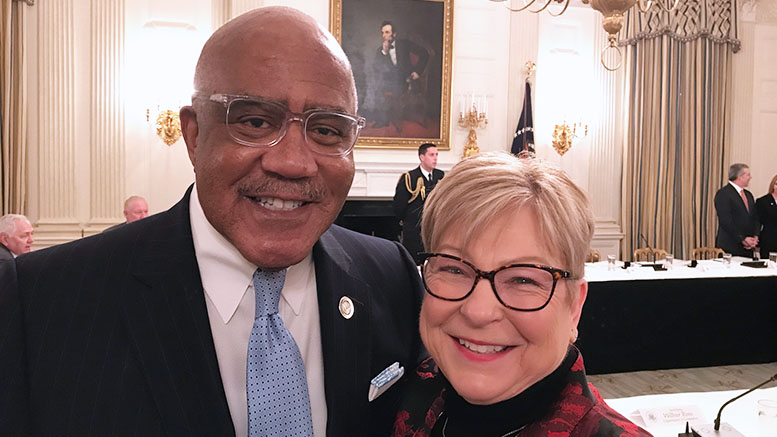A blue-ribbon workforce advisory board addressed a wide range of issues at its first meeting in Washington, D.C., including raising the profile of good-paying jobs in career and technical fields, emphasizing skills development rather than simply earning degrees, allowing Pell grants to be used for short-term training programs, and embracing workers often left out, such as mid-career changers, older displaced workers, those in prison, veterans and women.
Adviser to the President Ivanka Trump, who co-chairs the panel with U.S. Commerce Secretary Wilbur Ross, kicked off the American Workforce Policy Advisory Board meeting on Wednesday by noting the there are seven millions jobs available in the U.S., while there are six million job seekers — often without the skills needed for those jobs. But a four-year degree is not always needed to acquire those skills, they said. They can be attained through an associate degree or certificate earned at a community college, training through union-sponsored apprenticeships or on-the-job training provided by employers, to name a few.
That point was emphasized by several members of the board, which serves the National Council for the American Worker established by President Donald Trump last year. Fifteen percent of U.S. IBM hires over the past year were for “new collar” jobs. Half of the 14,000 people hired last year at Lockheed Martin didn’t have a four-year degree. Same at Apple, where half of people the company hired in the U.S. in 2018 didn’t have a four-year degree.
The 32-member advisory board includes leaders from business and industry, higher education, state and local governments, trade associations, nonprofits and organized labor. Walter Bumphus, president of the American Association of Community Colleges, is representing the two-year college sector. Other two-year college representatives include Sheree Utash, president of Wichita State University Applied Sciences and Technology (WSU Tech) in Kansas, and Jay Box, president of Kentucky Community and Technical College System.
During a roundtable discussion with President Donald Trump later in the day, Bumphus commended the administration “for the focus and spotlight you put on this very, very important issue.”
Sense of urgency
The commerce secretary emphasized the importance of finding solutions immediately, noting that a lack of skilled workers could cool the U.S. economy.
“It is imperative that our country move from studies and pilots to widespread national adoption of the best programs and the best practices,” Ross said.
Several board members briefly outlined workforce challenges in their field, as well as promising solutions, with a number of them citing partnerships with community colleges. Lockheed Martin CEO Marillyn Hewson highlighted teaming with community colleges on apprenticeships, and noted the company has focused especially on advanced manufacturing training.

U.S. Commerce Secretary Wilbur Ross chats with AACC President Walter Bumphus.
Apple CEO Tim Cook discussed a partnership with Austin Community College (Texas) in developing coding skills. IBM CEO Ginni Rometty described the company’s well-regarded Pathways in Technology Early College High Schools (P-TECH). Within six years, students graduate with an associate degree in applied science, engineering, computers or other competitive STEM disciplines.
Box, of the Kentucky Community and Technical College System, outlined how community colleges use labor data to connect students with jobs. In his state, the colleges examine available jobs and what skills they require, he said. Colleges then develop programs and courses around them, so students know there are jobs for them upon completion of the credential.
The advisory board also discussed tapping populations other than recent four-year college graduates. For example, several members highlighted the need to increase the number of women in STEM and trade fields. Iowa Gov. Kim Reynolds noted a partnership with Iowa Central Community College, which is working to train incarcerated individuals. She noted the average GPA for these students is 3.5.
“We know from education — from higher education — that we have to be innovative and disruptive in order to be in line and aligned with business and industry,” said WCU Tech’s Utash. “I can assure you, from the two-year sector, along with Dr. Bumphus, we’re doing everything we can to create the workforce for the future.”
Focus areas
The board has four key goals:
- Develop a robust campaign to promote multiple pathways to good-paying jobs.
- Improve the availability of high-quality, transparent and timely data to better inform students and educators, as well as match American workers to American jobs.
- Modernize candidate recruitment and training practices to expand the pool of job applicants that employers are looking to hire.
- Measure and encourage employer-led training and investments.
Board members will be assigned to working groups addressing the four areas. They will provide recommendations to the full board by year’s end, Ross said.

